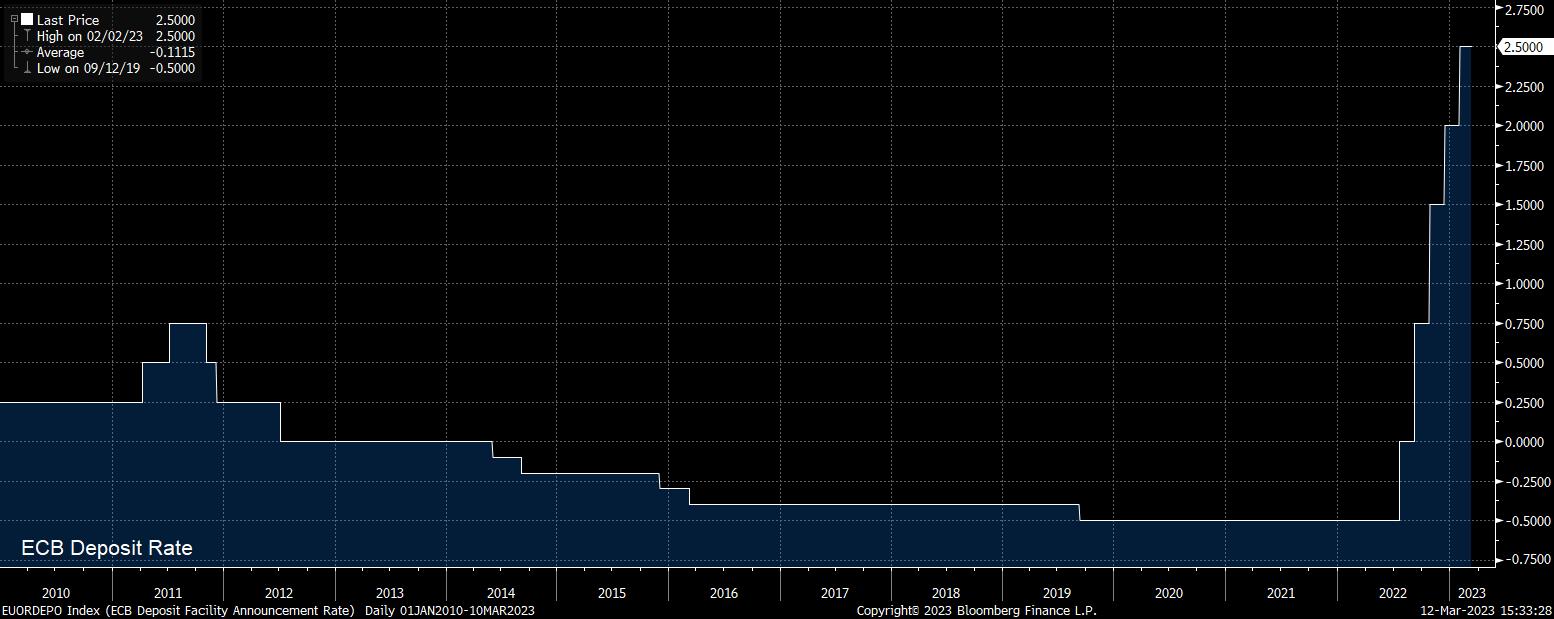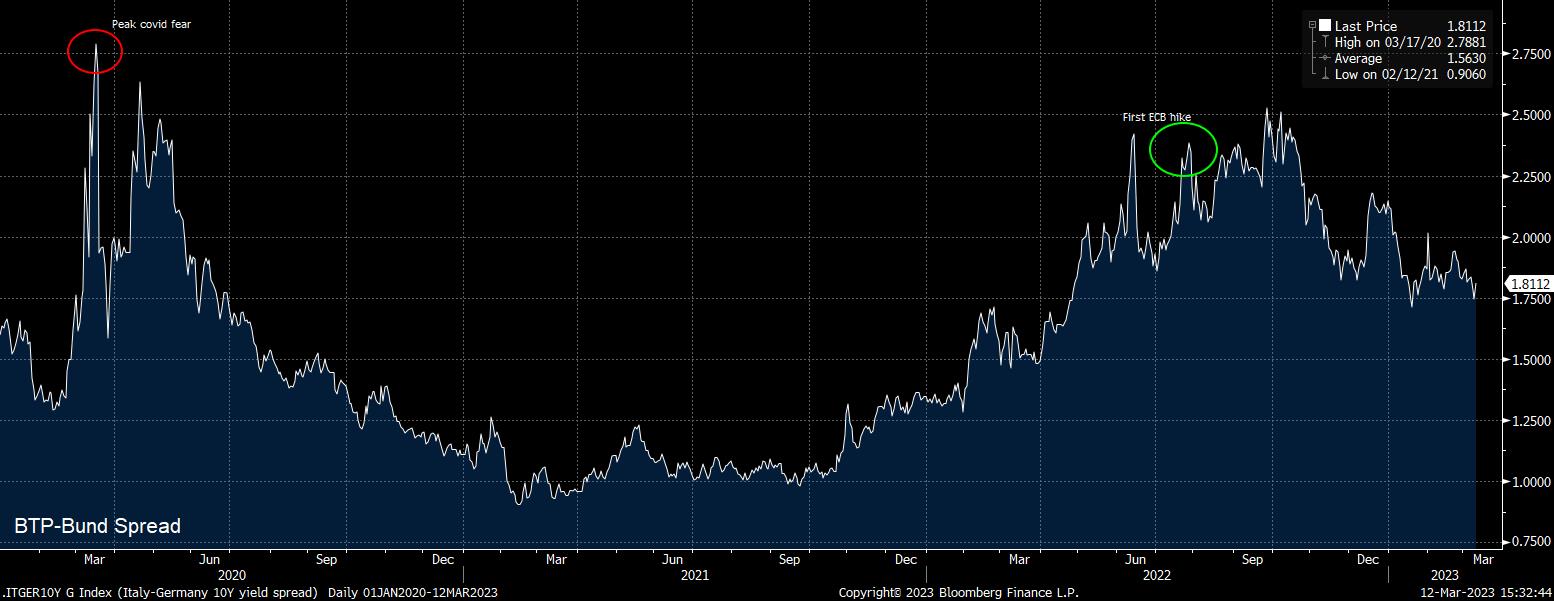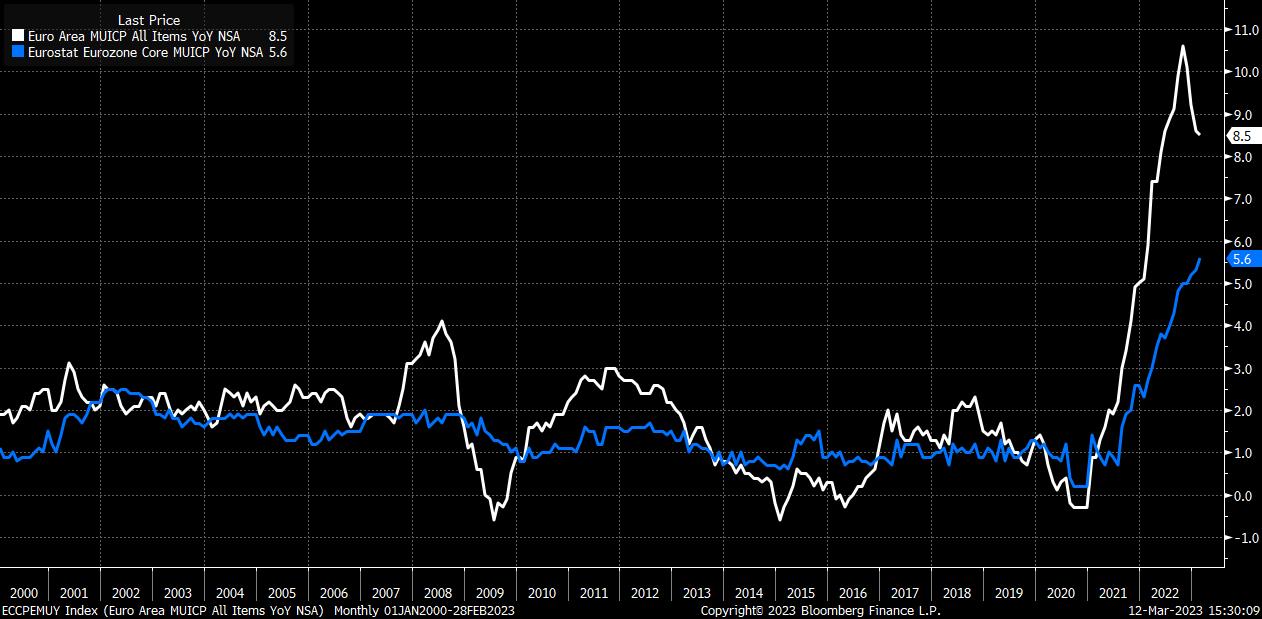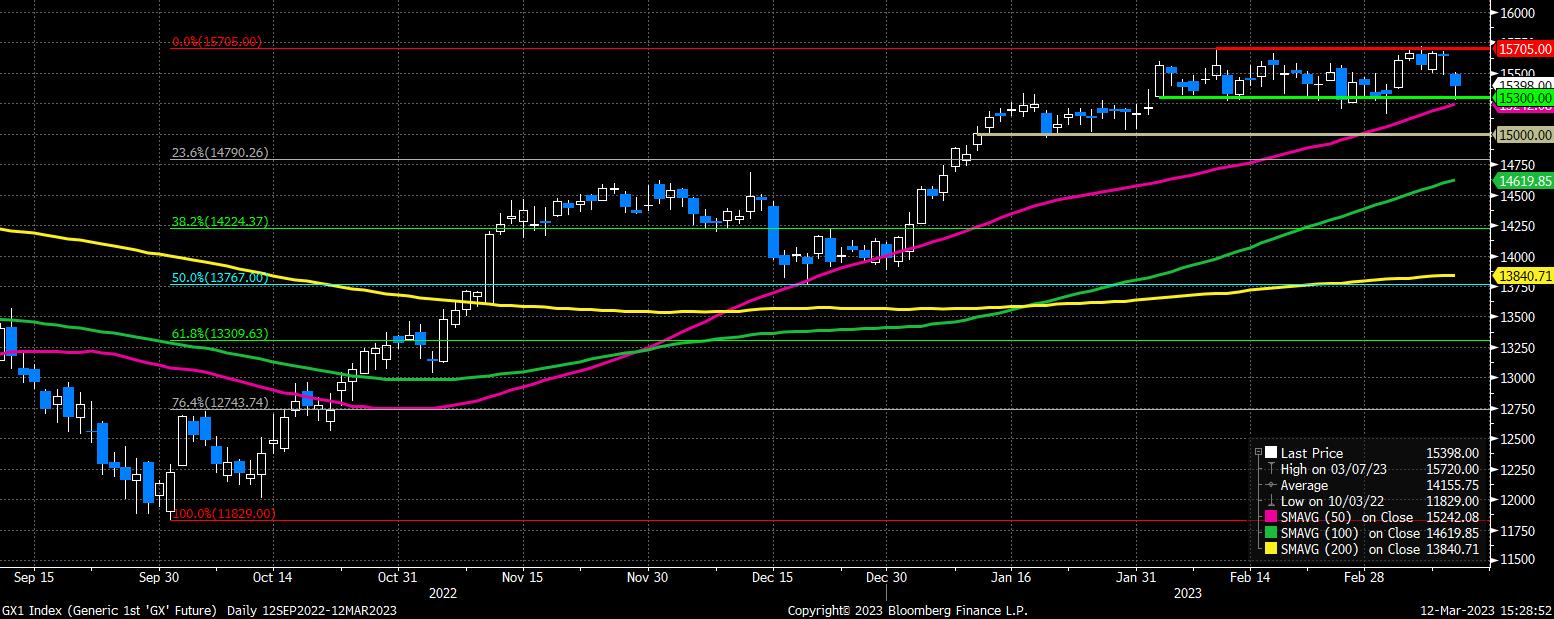- English (UK)
Unsurprisingly, given how concrete the ECB’s guidance has been over the last quarter, money markets fully price a 50bps hike at this meeting – a move which would take the deposit rate to 3%. Hence, the rate decision itself is unlikely to be a major market-mover.

Guidance Holds The Key
Instead, it will be the commentary – both explicit, and implicit via the latest economic forecasts – that are most likely to elicit a market reaction. As recent remarks from a plethora of GC members indicate, the remarkably prolonged period of unanimity and agreement among policymakers on the appropriate rate path is at an end. The hawks, led by Isabel Schnabel, have been touting the prospect of continuing to hike at a 50bps clip well into spring. Meanwhile, the doves, led by Chief Economist Philip Lane, would appear to be much more comfortable with downshifting to a 25bps per meeting pace in the second quarter.
Clearly, market participants will look for clarity on this key issue in both the policy statement, and President Lagarde’s post-meeting press conference. It seems likely, however, that the ECB will downshift to a 25bps hike in both May and June, before pausing to assess the impact of cumulative tightening on the eurozone economy. That said, risks to this call are clearly on the hawkish side, given the stubbornly high nature of core inflation within the bloc, and scant signs of a peak emerging.
Explicit guidance, of the ilk seen last December, is, however, unlikely. Instead, as a result of the aforementioned inflation concerns, optionality and flexibility are set to remain the ‘modus operandi’ of the ECB, with the policy statement likely to stress a ‘meeting-by-meeting’ and ‘data-dependent’ approach to policymaking. A likely compromise to pacify both sides of the hawk-dove divide could be a slower pace of hikes, accompanied by a faster pace of quantitative tightening – something that would pressure periphery debt, and widen core-periphery spreads (such as the BTP-Bund below) if it were to come to fruition.

Mixed Macro Signals
One reason for the continued uncertainty over how the ECB proceed into spring is the mixed signals coming from the eurozone economy.
On the growth side, momentum remains rather weak. Fourth quarter GDP was recently revised lower, a move that caught markets somewhat off guard, while German growth figures have also seen a similar downward revision. Furthermore, incoming PMI surveys, while at an 8-month high for the services sector, and a 9-month high for the manufacturing industry, don’t exactly signal a rapid pace of expansion. More worryingly, leading indicators in said reports, such as the new orders gauge, point to further headwinds for both sectors in coming months.
Meanwhile, on the inflation side, while headline price gauges have rolled over significantly, this is largely due to falling energy prices, as opposed to a dissipation of inflationary pressures generated within the bloc. The core gauge, which removes the impact of both energy and food prices, rose to a new record high 5.6% YoY in February, continuing to accelerate, with little sign of a peak emerging.

Forecasts in Focus
Despite this, the latest round of staff macroeconomic projections are likely to see inflation expectations revised lower this year, and in both 2024 and 2025. There are numerous factors behind this, including a continued decline in energy prices, and a stronger EUR (on a trade-weighted basis) than that seen during the prior forecast round in December.
As for growth, the key focus will be on the future path that the ECB outline, given that a 2023 recession is no longer the base case. Investors, especially those operating over a longer time horizon, will be focused on the trend that policymakers foresee, and whether a return to pre-covid growth levels is likely over the forecast period.
How to trade it?
Overall, there seems to be a high bar for a hawkish surprise from the ECB this week, given how the market prices a lofty 3.75% terminal rate to be hit in September, while also pricing around 35bps of tightening for the May meeting, which seems a little punchy. Consequently, setting aside for one moment the potential impact of the ongoing fallout from the SVB collapse, risks appear to be tilted to the downside for the EUR, but to the upside for eurozone debt, and equities.
In terms of levels to watch, it is relatively easy to define risk in EUR/USD – where implied vols price a move of +/- 140 pips on the week – with the 50-day moving average lurking a big figure above the current spot price, and the 100-day moving average a similar magnitude to the downside. Were this latter level to break, we would likely see a rapid test of longstanding support at 1.0485/1.0500, below which the bears may look to seize momentum and force a test of the 200-day moving average. To the upside, a test of the prior support-turned-resistance at 1.0780 maybe on the cards, if the ECB provided an unexpected hawkish surprise.
_EUR_USD_T_2023-03-12_15-29-02.jpg)
Meanwhile, turning to European equities, the DAX is rather delicately poised heading into Thursday’s ECB announcement. Price tested, but held, the bottom of the recent range at 15,300 last week, with the bulls also managing to hold the index above the key 50-day moving average, a level that hasn’t been broken to the downside all year. Continuing to trade above the 50-DMA leaves the bulls in control, while a break below could put a return to 15,000 on the cards.

Related articles
The material provided here has not been prepared in accordance with legal requirements designed to promote the independence of investment research and as such is considered to be a marketing communication. Whilst it is not subject to any prohibition on dealing ahead of the dissemination of investment research we will not seek to take any advantage before providing it to our clients.
Pepperstone doesn’t represent that the material provided here is accurate, current or complete, and therefore shouldn’t be relied upon as such. The information, whether from a third party or not, isn’t to be considered as a recommendation; or an offer to buy or sell; or the solicitation of an offer to buy or sell any security, financial product or instrument; or to participate in any particular trading strategy. It does not take into account readers’ financial situation or investment objectives. We advise any readers of this content to seek their own advice. Without the approval of Pepperstone, reproduction or redistribution of this information isn’t permitted.

